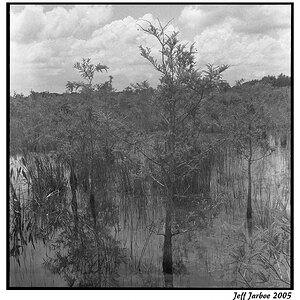ksmattfish
Now 100% DC - not as cool as I once was, but still
- Joined
- Aug 25, 2003
- Messages
- 7,019
- Reaction score
- 36
- Location
- Lawrence, KS
- Website
- www.henrypeach.com
- Can others edit my Photos
- Photos NOT OK to edit
photoman said:I've tried the prewetting of the film before developing and noticed a vast improvement in the purple/red stain on the tri-x and the t-max.
Always prewet, it helps avoid air bells and helps keep development even.



 I'd have to do my own personal film speed test.
I'd have to do my own personal film speed test.










